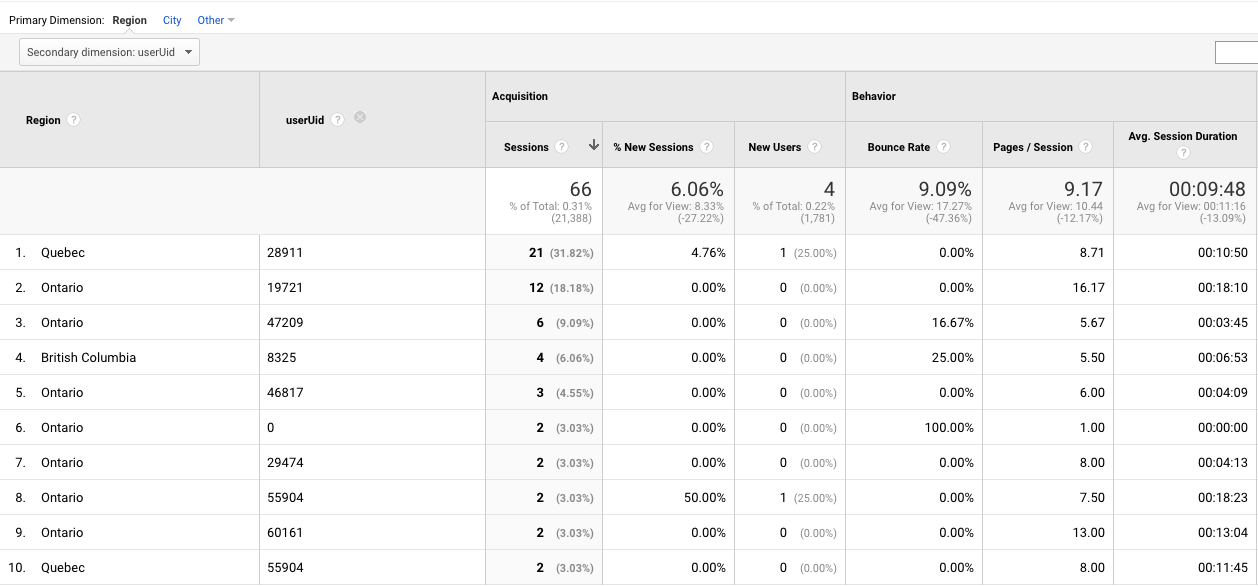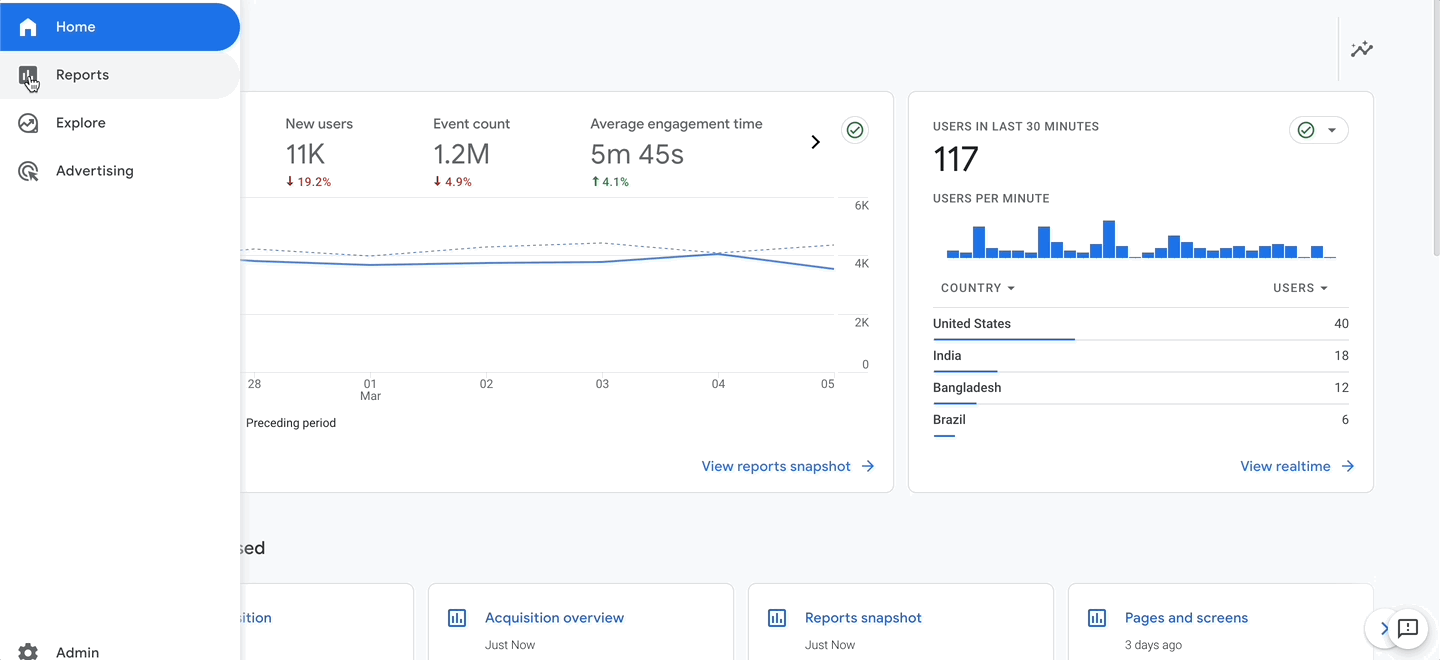Revealing the Intricacies of Secondary Measurement in Google Analytics: a Comprehensive Guide on How It Functions
Browsing the complex realm of additional dimensions in Google Analytics is a task that calls for a keen understanding of exactly how this feature operates within the platform. As digital landscapes develop and information comes to be progressively important for decision-making, grasping the subtleties of additional dimensions can be the secret to unlocking important insights. From setting up reports to diving right into sophisticated strategies, the journey to utilizing the power of additional measurements is both tough and fulfilling. Join us as we explore the details of this tool and discover just how it can revolutionize your data analysis methods.
Fundamentals of Secondary Measurement in Google Analytics
When analyzing data in Google Analytics, utilizing the secondary measurement function supplies valuable understandings into the performance of various metrics. The secondary measurement allows customers to additionally dissect their data by including an extra layer of info to their primary dimensions. By doing so, analysts can acquire a much more comprehensive understanding of the factors affecting their site's performance.
In Google Analytics, the main dimensions represent the major categories of data, such as traffic sources or gadgets. When a secondary measurement is used, it supplies a much deeper level of granularity by revealing another facet of the information within the selected main measurement. If the key measurement is 'Website traffic Resource,' adding an additional dimension like 'Touchdown Web page' can disclose which specific web pages are driving traffic from each source.
This function is especially beneficial for determining patterns, connections, and patterns that may not be quickly obvious when checking out the data from a solitary measurement. By leveraging the additional dimension in Google Analytics, customers can discover beneficial understandings that can notify critical decisions and optimizations to enhance internet site performance.
Establishing Up Secondary Measurement Records
Expanding on the insights obtained via the application of second measurements in Google Analytics, the procedure of setting up additional dimension records includes setting up extra layers of information to additionally enhance the deepness of analysis. Once the key record is chosen, individuals can click on the "Second dimension" tab situated over the information visualization area. From there, a drop-down menu will certainly appear, supplying a wide variety of alternatives to choose the additional measurement that best matches the primary data collection.
Leveraging Second Measurements for Insights
Using additional dimensions in Google Analytics supplies a calculated strategy to removing nuanced understandings for educated decision-making in on-line organization optimization. By combining primary measurements with secondary measurements, organizations can delve deeper into their data to uncover beneficial relationships and patterns that might not be right away noticeable. By segmenting web site traffic by geographical area (primary dimension) and after that adding a second dimension like tool group, businesses can determine if certain regions prefer accessing the site via mobile or desktop.
Moreover, leveraging additional dimensions allows companies to get a better understanding of user habits and choices. Evaluating conversion prices based on traffic resources (primary measurement) along with the secondary measurement of touchdown pages can reveal which certain web pages are most efficient in driving conversions for natural search traffic versus social media web traffic. These understandings can then educate advertising strategies and web site optimization initiatives to enhance total performance and make best use of ROI.
Advanced Strategies for Second Dimensions
To further remove detailed understandings and improve data-driven decision-making within Google Analytics, carrying out innovative methods for utilizing secondary dimensions is vital in opening deeper layers of valuable info for company optimization. One innovative technique is the usage of customized measurements and you can try this out metrics, permitting the tracking of specific individual communications or actions that are not recorded by default in Google Analytics. By implementing and defining custom-made dimensions, businesses can customize their monitoring to align with unique service objectives and purposes.
One more innovative method includes using filters in conjunction with secondary dimensions. Filters allow individuals to fine-tune the information showed in Google Analytics reports, providing more targeted and appropriate understandings. By using filters purposefully with additional dimensions, companies can sector data extra effectively, causing a more clear understanding of user actions and efficiency metrics.

Optimizing Information Analysis With Second Dimensions

Moreover, enhancing data evaluation with additional dimensions involves try out various combinations to determine patterns and relationships that might not be instantly apparent. This iterative approach enables analysts to fine-tune their coverage and concentrate on one of the most appropriate information points for their organization objectives. Ultimately, by leveraging secondary dimensions successfully, analysts can boost the accuracy and performance of their data analysis initiatives in Google Analytics.
Conclusion
In final thought, understanding the details of additional measurements in Google Analytics is important for getting deeper understandings right into website performance. By look at more info establishing up additional measurement records, leveraging them for insights, and using advanced techniques, experts can optimize information evaluation and make informed choices. This thorough guide has offered a comprehensive overview of just how secondary measurements job and their importance in enhancing the analytical abilities of Google Analytics users.
The secondary dimension allows users to even more explore their information by adding an extra layer of info to their key measurements. When a second measurement is used, it provides a deeper degree of granularity by revealing another facet of the information within the picked key measurement.Increasing on the understandings Website gained through the utilization of secondary measurements in Google Analytics, the procedure of establishing up second measurement records involves configuring added layers of information to better improve the depth of analysis. By integrating main dimensions with secondary dimensions, businesses can dive much deeper right into their data to uncover valuable connections and patterns that may not be quickly noticeable. One method to maximize information analysis with secondary measurements is to incorporate them with primary measurements to obtain a much more extensive sight of site performance.